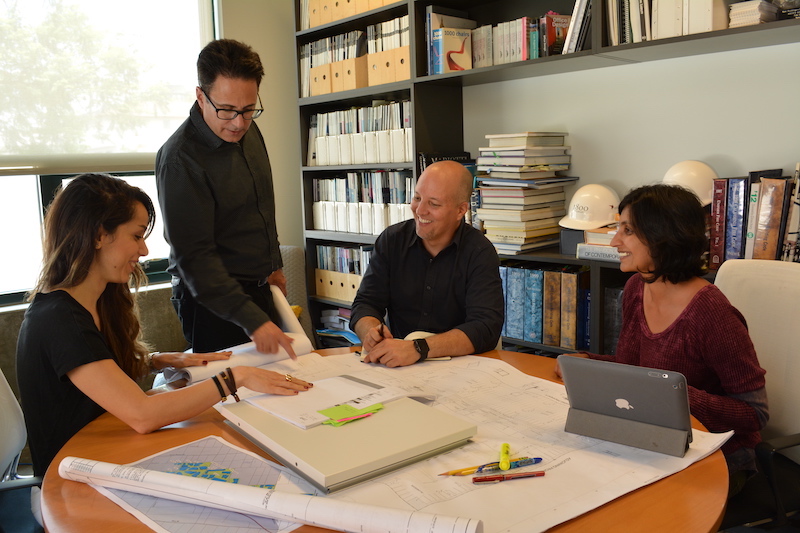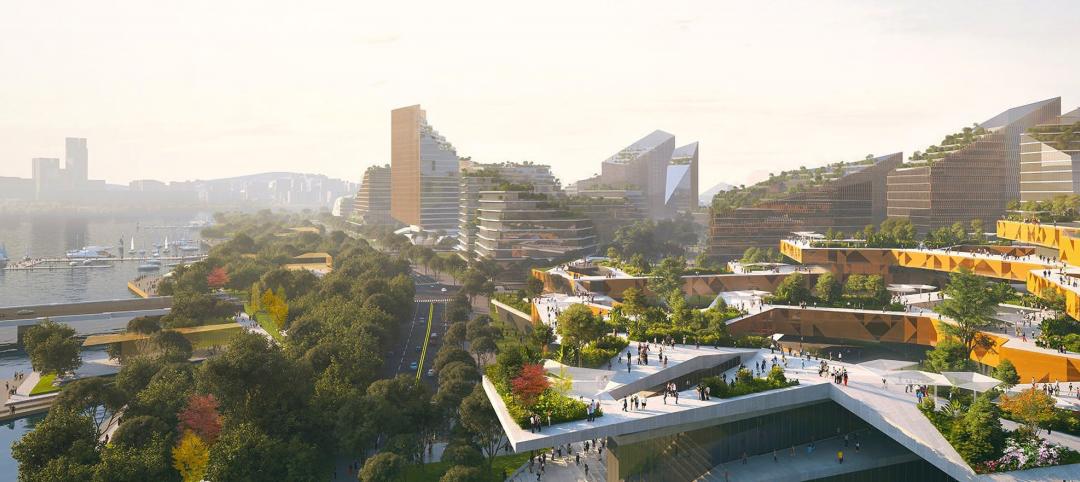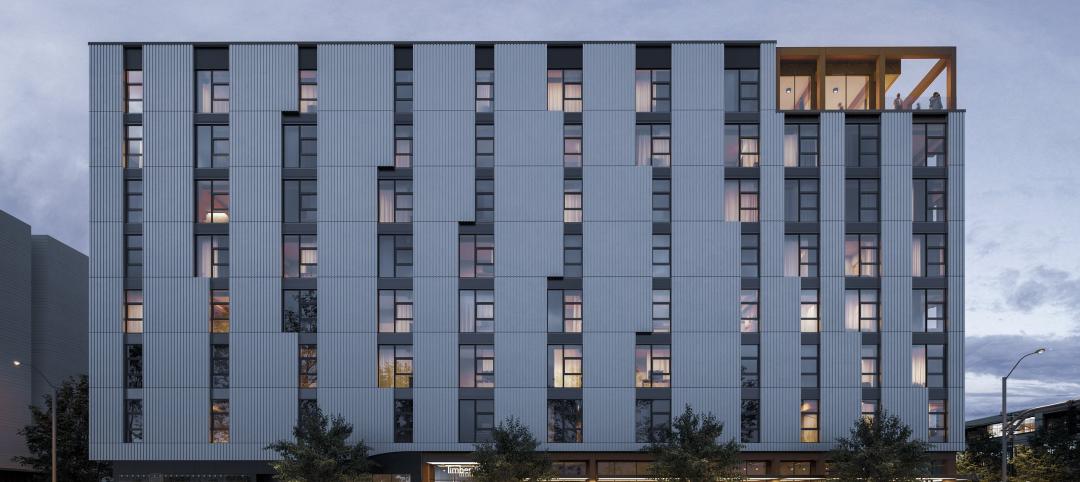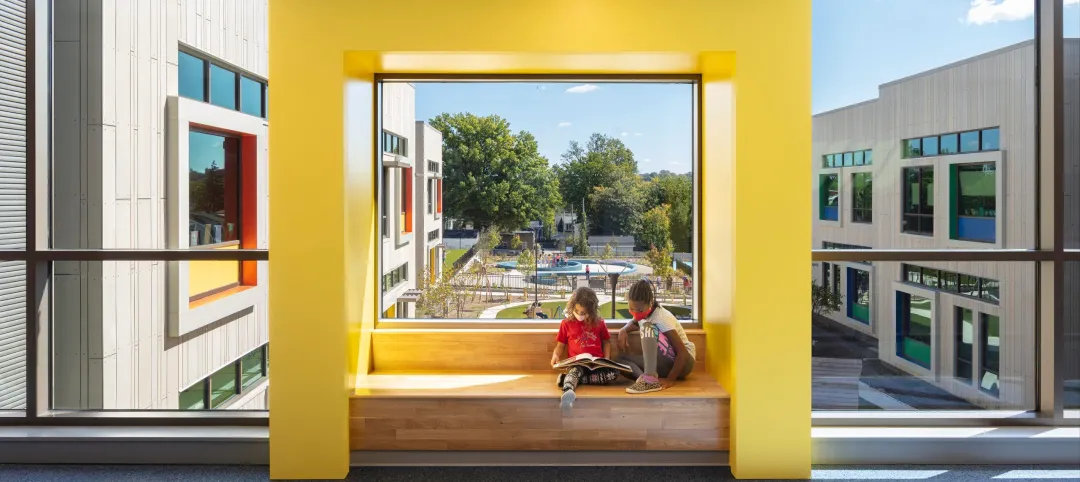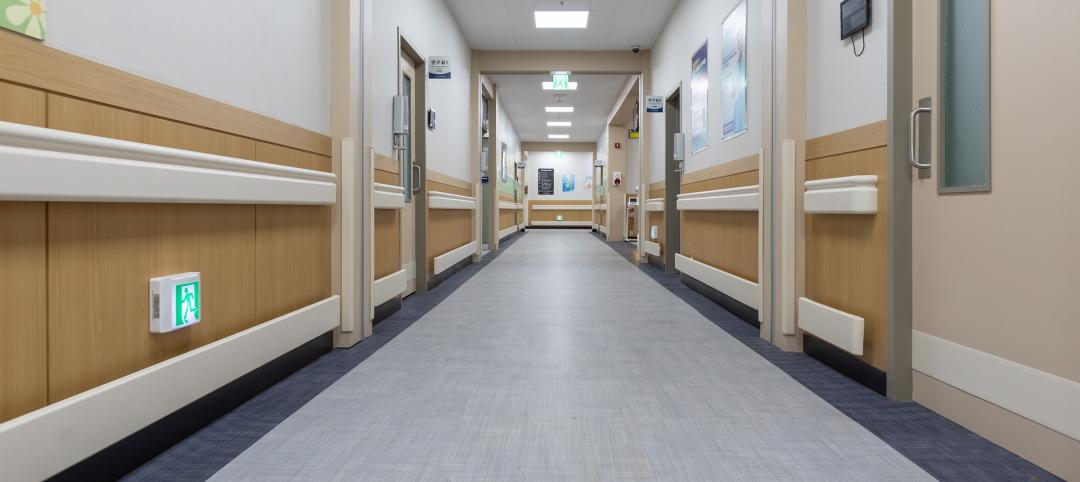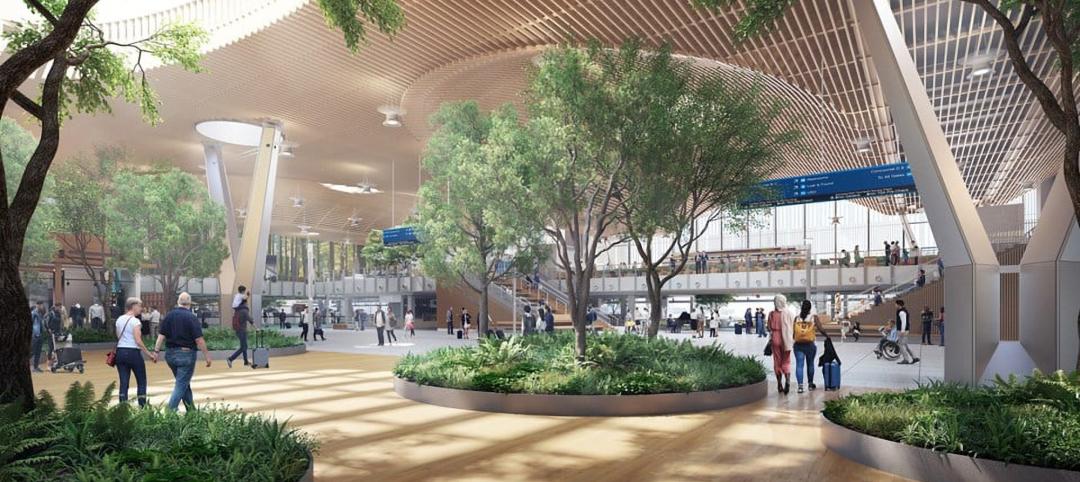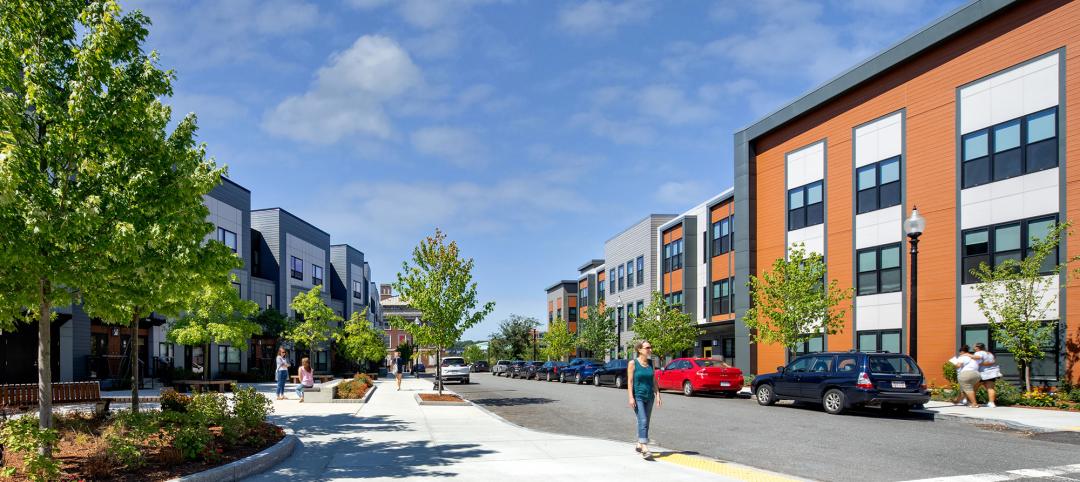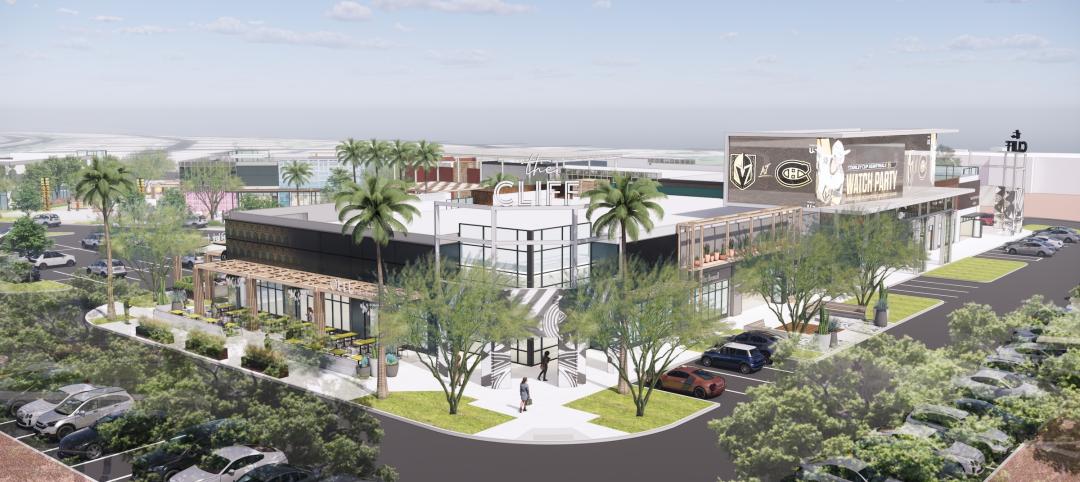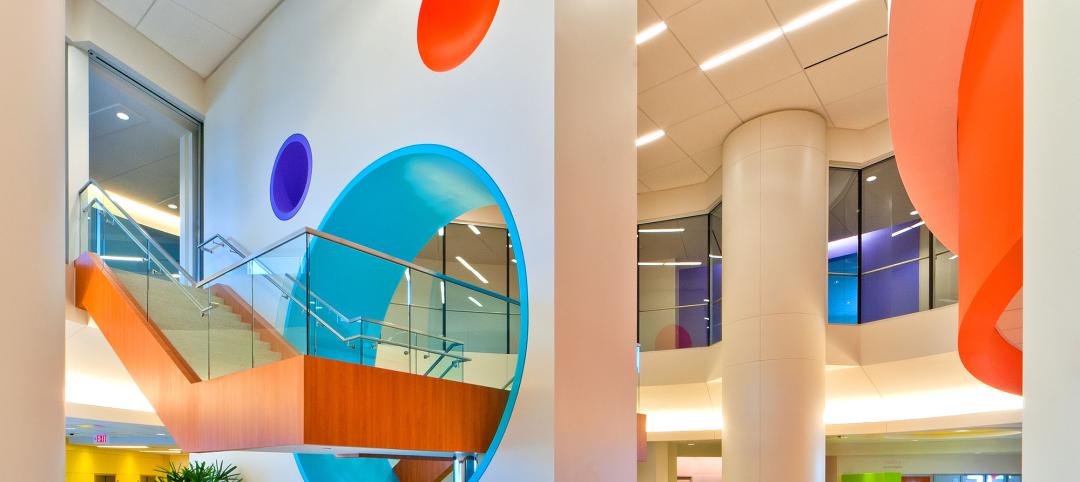Throughout my early life, my father would get up at 4:30 in the morning, six days a week, for his job as a contractor. I knew his work was taxing from seeing his coarse hands and tired eyes after he got home each day, yet he always had the energy to spend time with me. He was my closest friend and confidant, as well as my most influential role model.
In later years, as I began to pursue architecture professionally, he made sure to instill in me a sense of respect toward all workers involved in the building process, from architects and engineers, to contractors and subcontractors. It was important to him that I saw the importance of collaboration between teams, and the value of each person’s unique role and perspective. To him, each individual had ideas worthy of consideration and reward.
My experiences as a young man working side-by-side with him on job sites led to a deeper understanding of the difficulty that comes with working in the trades, and how the best at their craft worked hard to earn their sense of pride.
Using his own drawings, Swartz discusses the importance of construction detailing with his team in the HLW Los Angeles office.
REINSTILLING QUALITY IN CONSTRUCTION DRAWINGS
After 35 years as an architect, one of the things I have come to realize is that we architects need help from the trades in order to improve the quality of construction drawings. The knowledge that contractors and subtrades have is key in creating drawings and details that reflect the best constructed solution. Harnessing a sense of curiosity in the field and asking questions during the building process is one of the best ways to improve one’s understanding of construction, and therefore one’s understanding of architecture.
There have been countless times where I have seen details drawn by architects that ended up being built differently, often in a manner that improved upon the original design while still preserving the original aesthetic goal.
It is also true that contractors need help from architects in order to better understand the goals of a given design. Many times I have witnessed design goals being lost within the process of administration, change orders, RFI’s, and the many operations that go into constructing a building.
We can avoid this predicament if we go into the project supporting our designs with quality construction documents and open communication between teams. If trades workers are going to the job each day knowing their whole team is supporting them, it will inevitably produce the best possible results.
LEARNING FROM OTHER MEMBERS OF THE PROJECT TEAM
The key to all of this is a shared understanding that everyone on the project team can learn from one another. I cannot tell you how many times I have been taught something new by a subcontractor in the field because I was willing to ask questions, and people were usually more than happy to explain what they were doing and why.
Through the consolidation of field knowledge, I have continued to learn long after my days in school. I have likewise made an effort to explain the decision making behind our projects so that the whole project team can both understand our reasoning and gain insight into the design process.
Though no single individual can hold all the knowledge of an entire team, this only proves that it is all the more important for everyone to work together to fill in the gaps. That’s why I always try to be as approachable as possible, so that I can always be exchanging information across teams and across trades.
VALUES THAT ELEVATE THE PROFESSION OF ARCHITECTURE
Every evening when I wrap up my work, I can’t help but wonder if my father would approve of the architect I have become. Although I don’t come home with coarse hands or an exhausted body, I still think he would be proud of my hard-working attitude and my respect for my coworkers. I believe he would acknowledge my attempts to better understand construction and incorporate that into practical solutions for real world designs.
I can only hope he would agree with my practice of prioritizing the quality of construction drawings, along with my belief that imparting those values to my team is the best way to elevate the profession. Undoubtedly, he would have challenged every detail I drew and pushed me even harder to find the best conceivable solutions to any problem.
But I believe that, as a contractor himself, he would have respected my process as a designer, and would have been pleased with the way I collaborate with my team. Occasionally, he might have even thought that I had found a better solution than his.
ABOUT THE AUTHOR
David Swartz, FAIA, IIDA, is a Senior Partner in the Los Angeles office of architecture firm HLW. He would like to thank Kylie McManus for help in editing this essay.
Related Stories
Sustainable Development | May 10, 2024
Nature as the city: Why it’s time for a new framework to guide development
NBBJ leaders Jonathan Ward and Margaret Montgomery explore five inspirational ideas they are actively integrating into projects to ensure more healthy, natural cities.
Mass Timber | May 8, 2024
Portland's Timberview VIII mass timber multifamily development will offer more than 100 affordable units
An eight-story, 72,000-sf mass timber apartment building in Portland, Ore., topped out this winter and will soon offer over 100 affordable units. The structure is the tallest affordable housing mass timber building and the first Type IV-C affordable housing building in the city.
Architects | May 8, 2024
Ivan O’Garro, AIA joins LEO A DALY as a vice president
Integrated design firm LEO A DALY welcomes Ivan O’Garro, AIA, as a vice president and managing principal of its Atlanta studio.
K-12 Schools | May 7, 2024
World's first K-12 school to achieve both LEED for Schools Platinum and WELL Platinum
A new K-12 school in Washington, D.C., is the first school in the world to achieve both LEED for Schools Platinum and WELL Platinum, according to its architect, Perkins Eastman. The John Lewis Elementary School is also the first school in the District of Columbia designed to achieve net-zero energy (NZE).
Healthcare Facilities | May 6, 2024
Hospital construction costs for 2024
Data from Gordian breaks down the average cost per square foot for a three-story hospital across 10 U.S. cities.
Biophilic Design | May 6, 2024
The benefits of biophilic design in the built environment
Biophilic design in the built environment supports the health and wellbeing of individuals, as they spend most of their time indoors.
MFPRO+ Special Reports | May 6, 2024
Top 10 trends in affordable housing
Among affordable housing developers today, there’s one commonality tying projects together: uncertainty. AEC firms share their latest insights and philosophies on the future of affordable housing in BD+C's 2023 Multifamily Annual Report.
Retail Centers | May 3, 2024
Outside Las Vegas, two unused office buildings will be turned into an open-air retail development
In Henderson, Nev., a city roughly 15 miles southeast of Las Vegas, 100,000 sf of unused office space will be turned into an open-air retail development called The Cliff. The $30 million adaptive reuse development will convert the site’s two office buildings into a destination for retail stores, chef-driven restaurants, and community entertainment.
Codes and Standards | May 3, 2024
New York City considering bill to prevent building collapses
The New York City Council is considering a proposed law with the goal of preventing building collapses. The Billingsley Structural Integrity Act is a response to the collapse of 1915 Billingsley Terrace in the Bronx last December.
Architects | May 2, 2024
Emerging considerations in inclusive design
Design elements that consider a diverse population of users make lives better. When it comes to wayfinding, some factors will remain consistent—including accessibility and legibility.


